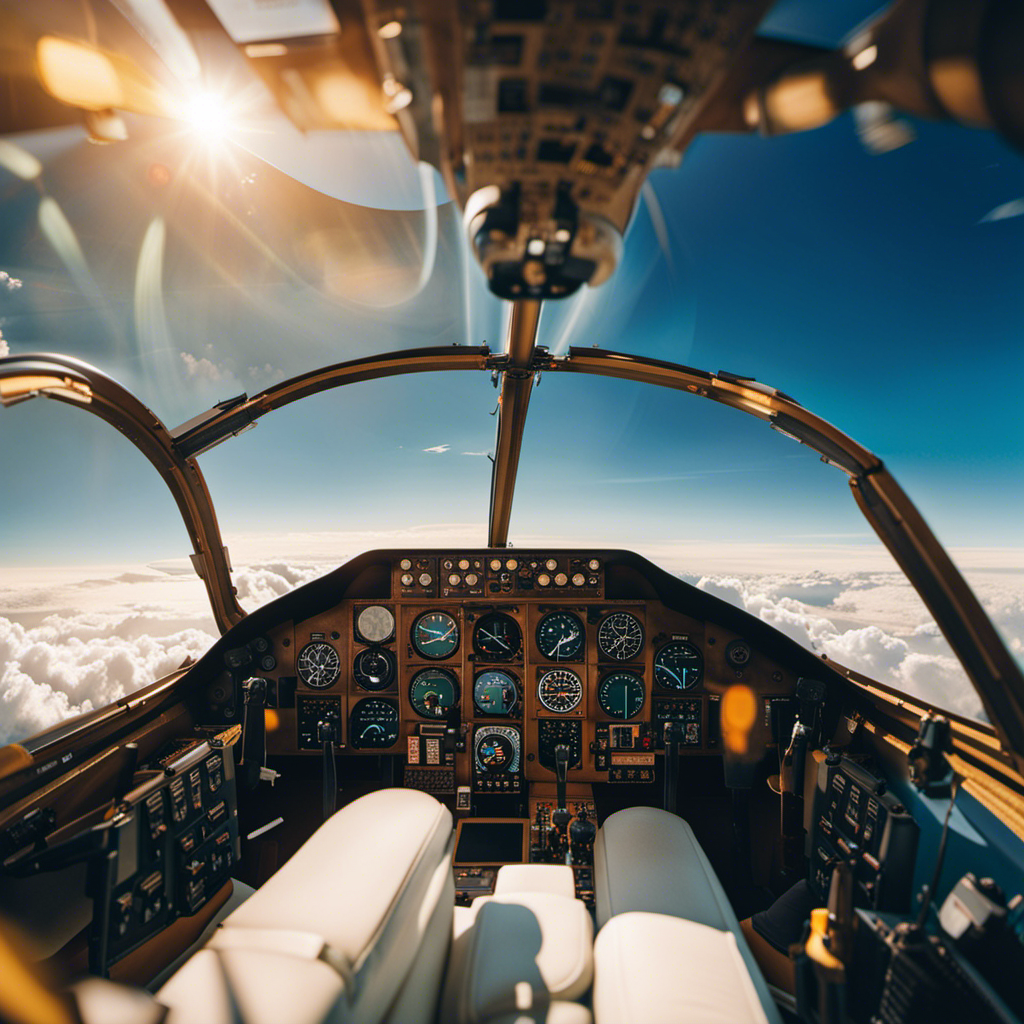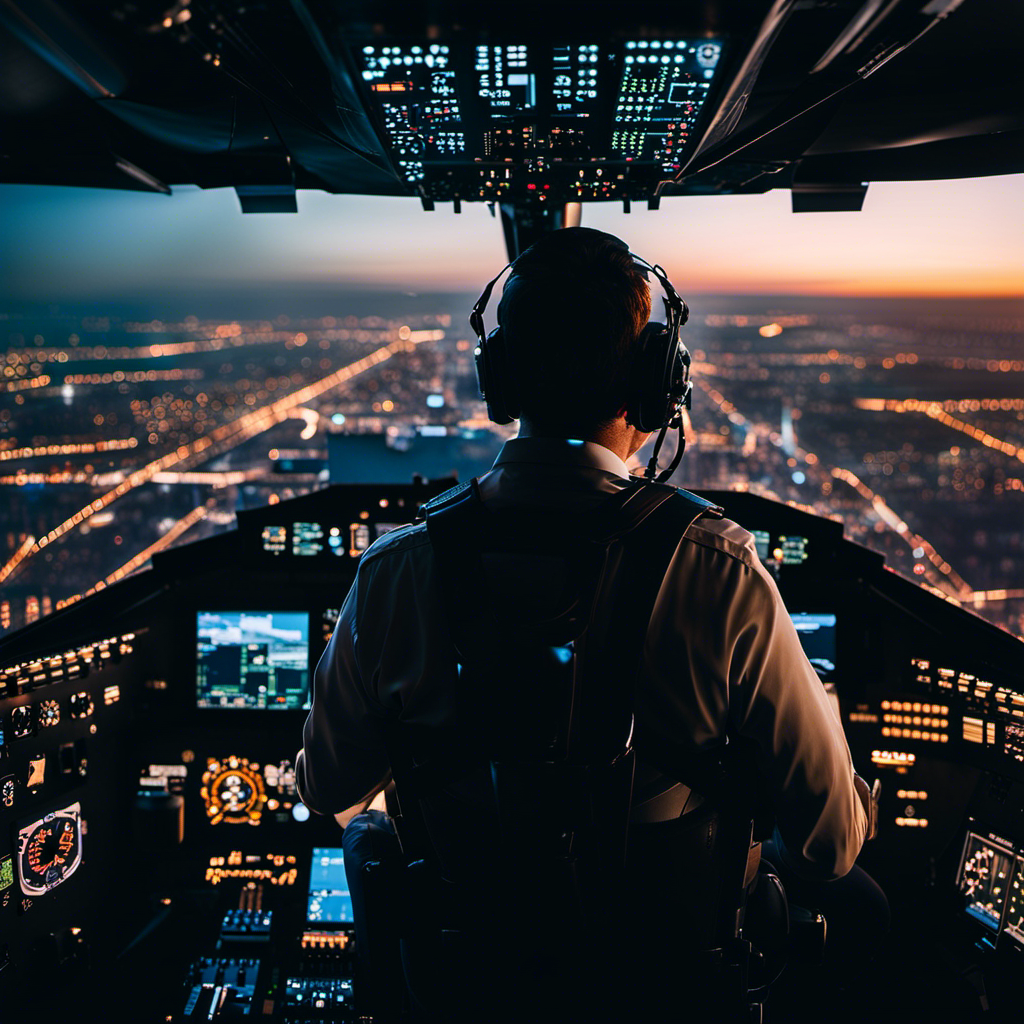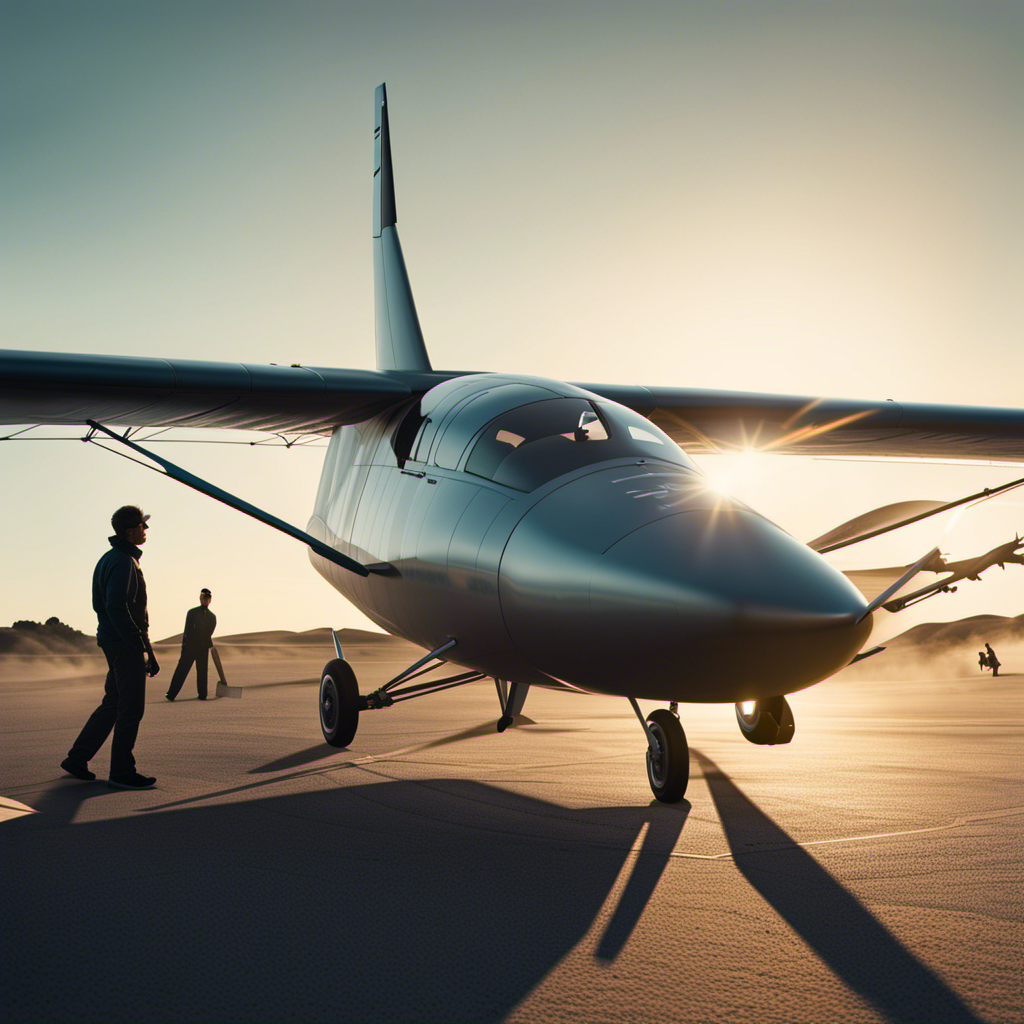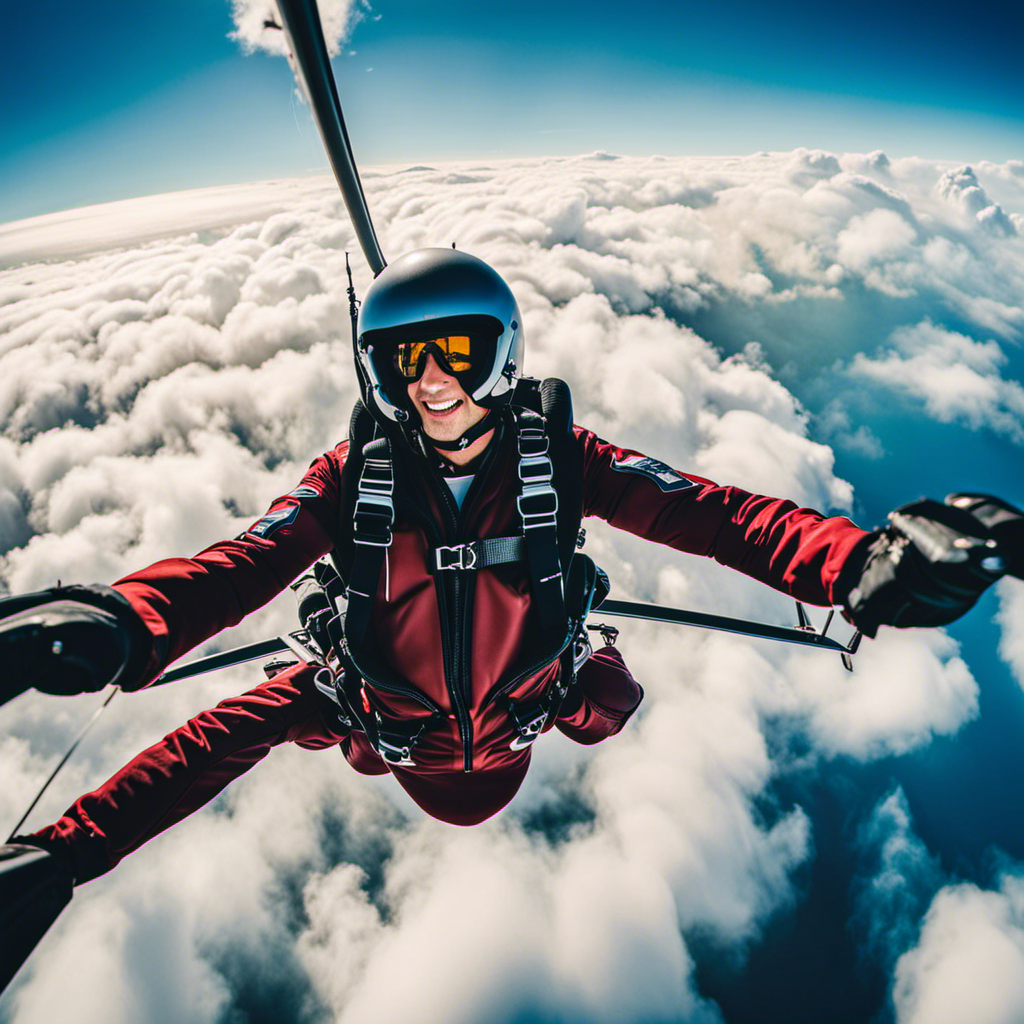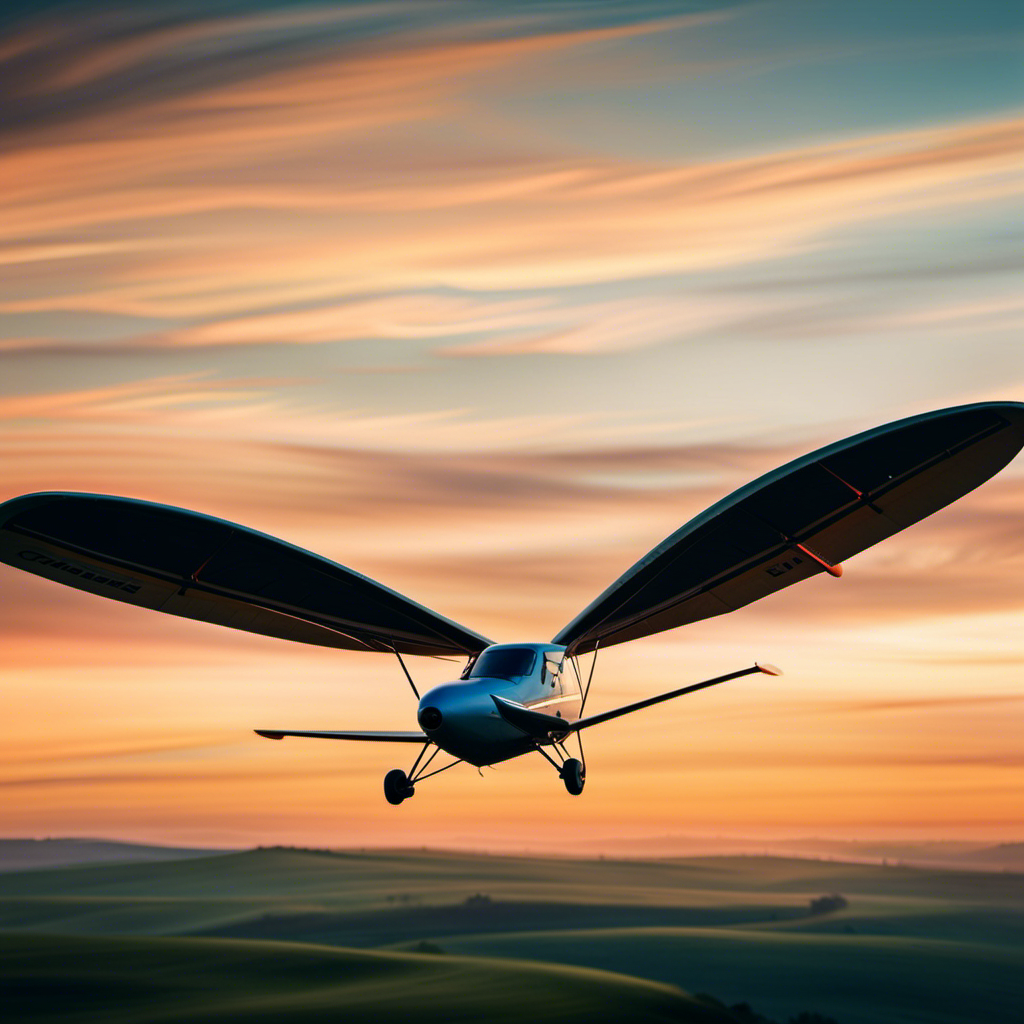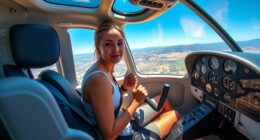Interested in experiencing what it’s truly like to be a master of the skies? Buckle up and prepare for an exciting adventure as I guide you through the thrilling life of an aeronautical pilot.
From the rigorous training and education to the heart-pounding thrill of takeoffs and landings, being a pilot is like no other profession. But it’s not all glamour and glory – there’s a lot of responsibility and hard work involved too.
So, buckle up and prepare to discover the rewards and challenges of a career in aeronautics.
Key Takeaways
- A career in aeronautics offers a thrilling and rewarding experience, including adrenaline rushes, freedom, and control, the excitement of takeoff, precision of landing, and the sensation of soaring.
- Balancing work and personal life can be challenging in aeronautics due to long hours, irregular schedules, time away from home, and the need to prioritize loved ones. Building a support network is important.
- A career in aeronautics comes with its own set of challenges, such as demanding schedules, time away from loved ones, the responsibility for passenger safety, and the overwhelming impact on the aviation industry.
- Aeronautical pilots require a range of technical skills including navigation and flight planning, aircraft systems knowledge, communication and teamwork, weather analysis and decision-making, and emergency procedures.
The Path to Becoming an Aeronautical Pilot
To become an aeronautical pilot, you’ll need to complete rigorous training and obtain the necessary certifications. A career as an aeronautical pilot offers promising prospects with the increasing demand for air travel and cargo transportation.
With the advancements in technology, the role of technology in modern aviation cannot be overlooked. From state-of-the-art navigation systems to advanced aircraft controls, technology has revolutionized the way pilots operate and navigate in the skies. As an aeronautical pilot, it is essential to stay updated with the latest technological advancements to ensure safe and efficient flights.
Moving forward, flight training and education requirements play a vital role in shaping a successful pilot. Without these necessary qualifications, aspiring pilots cannot gain the expertise and knowledge required to operate an aircraft effectively.
Flight Training and Education Requirements
Flight training and education requirements usually vary depending on the type of aircraft a pilot wants to fly. In order to become a pilot, one must complete a flight training program that includes both ground and flight instruction. These programs are designed to provide aspiring pilots with the knowledge and skills necessary to safely operate an aircraft.
With advancements in the aviation industry, flight training programs have become more sophisticated and comprehensive. They now incorporate cutting-edge technology and simulation techniques to enhance the learning experience. These advancements have made it easier for pilots to gain the necessary skills and knowledge to succeed in their careers.
Once the flight training is complete, pilots can then begin gaining experience as a co-pilot, working alongside experienced pilots to further develop their skills.
Gaining Experience as a Co-Pilot
Working as a co-pilot allows pilots to gain valuable experience and further develop their skills in the aviation industry. Co-pilot training programs provide aspiring pilots with the opportunity to learn from experienced captains and familiarize themselves with the operational procedures of different aircraft.
As a co-pilot, I have the chance to observe and participate in flight operations, including pre-flight checks, takeoffs, landings, and emergency procedures. This hands-on experience is crucial for building confidence and honing my decision-making abilities. It also allows me to become familiar with the complexities of airline operations and develop a strong understanding of the teamwork required in the cockpit.
Advancing from co-pilot to captain requires accumulating a certain number of flight hours, passing additional exams, and demonstrating leadership skills. This transition is a significant milestone in a pilot’s career, marking the progression towards taking on the responsibilities and duties of an aeronautical pilot.
The Responsibilities and Duties of an Aeronautical Pilot
As a pilot, it’s crucial to understand and fulfill the responsibilities and duties required in the aviation industry. These responsibilities and duties encompass a wide range of tasks that ensure the safety and efficiency of flight operations. To give you a better understanding, let’s take a look at the table below:
| Responsibilities | Duties |
|---|---|
| Pre-flight checks | Conducting pre-flight inspections to ensure the aircraft’s airworthiness |
| Navigation | Plotting and following the most efficient route |
| Communication | Maintaining clear and professional communication with air traffic control |
| Emergency procedures | Being prepared to handle any unexpected situations |
These are just a few examples of the many responsibilities and duties that a pilot must be well-versed in. Now that we have covered the importance of understanding these responsibilities and duties, let’s move on to the exciting topic of flying different types of aircraft.
[Transition sentence to the subsequent section about flying different types of aircraft]Flying Different Types of Aircraft
Once you become a pilot, it’s important to gain experience flying different types of aircraft. This not only enhances your skills but also makes you more versatile in your career.
When flying different aircraft, it’s crucial to understand their specific maintenance and upkeep requirements. Each type of aircraft has its own set of maintenance protocols that need to be followed to ensure safe and efficient operation.
Additionally, as technology continues to advance, the role of technology in modern aircraft cannot be overlooked. From advanced avionics systems to improved navigation tools, technology plays a vital role in enhancing the safety and performance of aircraft. As a pilot, it is essential to stay updated with the latest technological advancements in order to effectively operate different types of aircraft.
This knowledge will also be valuable when it comes to handling challenging weather conditions, which we will discuss in the next section.
Handling Challenging Weather Conditions
When you’re faced with challenging weather conditions, it’s crucial to stay calm and make informed decisions.
As an aeronautical pilot, I rely on strategies for navigating turbulent weather and continuous weather monitoring during flights to ensure the safety of myself, my crew, and our passengers.
One effective strategy is to utilize the information provided by weather radar systems, which allow us to detect precipitation and areas of turbulence in real-time.
Another important tool is the use of weather charts and forecasts, which provide valuable information about wind patterns, cloud formations, and storm systems.
By constantly monitoring the weather conditions, we can make timely adjustments to our flight path and altitude to avoid dangerous situations.
This continuous vigilance and adaptability are essential for maintaining safety and security in the skies, ensuring a smooth and successful journey for everyone on board.
Maintaining Safety and Security in the Skies
To maintain safety and security in the skies, it is crucial to stay vigilant and adapt to changing weather conditions. As a pilot, understanding the importance of following air traffic control instructions and adhering to emergency procedures is essential. Air traffic control plays a vital role in managing the flow of aircraft, ensuring safe separation between planes, and providing guidance during emergencies.
By maintaining clear communication with air traffic control, pilots can navigate through busy airspace and avoid potential collisions. Additionally, being well-versed in emergency procedures is crucial for handling unexpected situations. Pilots undergo rigorous training to respond to emergencies such as engine failures, fires, or loss of communication. These procedures are designed to ensure the safety of passengers and crew members.
Transitioning to the thrill of takeoffs and landings, the execution of these maneuvers requires precision and skill.
The Thrill of Takeoffs and Landings
As I approach the runway, I feel the adrenaline rush as I prepare for takeoff. The thrill of flying is truly exhilarating, and the anticipation builds as the engines roar to life. With my hands on the controls, I navigate the aircraft down the runway, the ground beneath me becoming a blur. And then, with a surge of power, the wheels leave the ground, and I’m soaring through the sky. It’s a feeling like no other, the sensation of freedom and control as I pilot the aircraft through the clouds. The adrenaline rush is constant, whether it’s the excitement of takeoff or the precision of landing. Flying is not just a job for me; it’s a passion that fuels my soul.
| Thrill of Flying | Adrenaline Rush |
|---|---|
| Freedom and control | Excitement of takeoff |
| Precision of landing | Sensation of soaring |
| Passion for flying | Constant adrenaline |
Balancing work and personal life is a challenge that many pilots face.
Life Outside the Cockpit: Balancing Work and Personal Life
Finding a healthy balance between my career as a pilot and my personal life can be a challenging task. As a pilot, work-life balance is crucial to maintaining my well-being and personal relationships.
The demanding nature of the job often requires long hours, irregular schedules, and time away from home. It is important to prioritize and allocate time for my loved ones and activities outside of work.
Open communication with my family and friends helps them understand the demands of my profession and allows for better planning and coordination. Building a support network of fellow pilots and aviation professionals also provides a sense of camaraderie and understanding.
By actively managing my time and prioritizing my personal relationships, I can find fulfillment in both my career and personal life.
Moving forward, let’s explore the rewards and fulfillment of a career in aeronautics.
The Rewards and Fulfillment of a Career in Aeronautics
Achieving a healthy work-life balance in a career in aeronautics can bring immense rewards and fulfillment. As a pilot in the aviation industry, I have experienced firsthand the benefits of pursuing this profession. Some of the rewards and fulfillment that come with a career in aeronautics include:
-
Personal growth and development:
-
Constantly learning and improving technical skills
-
Building resilience and adaptability in high-pressure situations
-
Global impact on the aviation industry:
-
Contributing to the safe and efficient transportation of people and goods worldwide
-
Collaborating with a diverse team of professionals to ensure smooth operations
However, it is important to acknowledge the challenges that come with this career. The demanding schedules, time away from loved ones, and the responsibility of ensuring passenger safety can be overwhelming. Nonetheless, the rewards of a career in aeronautics far outweigh the challenges, and the impact on the aviation industry is immeasurable.
Frequently Asked Questions
What is the average salary of an aeronautical pilot?
The average salary of an aeronautical pilot is influenced by various factors such as experience, qualifications, and the job market demand. Pilot salaries tend to be competitive due to the specialized skills and responsibilities involved in the profession.
How many hours of flying experience are required to become a captain?
To become a captain, a certain number of hours of flying experience is required. The exact amount varies depending on the airline and country, but it typically ranges from 1,500 to 3,000 hours.
What are the physical fitness requirements for an aeronautical pilot?
Physical fitness requirements for aeronautical pilots are essential. They must meet certain medical standards set by aviation authorities. Additionally, they undergo regular medical examinations and may be required to participate in specific training programs to maintain their fitness levels.
Are there any age restrictions for becoming an aeronautical pilot?
Age restrictions for becoming an aeronautical pilot vary by country. In the United States, the minimum age is 16 for a student pilot license and 23 for an airline transport pilot license. Training requirements include flight hours and passing exams.
What are the opportunities for career advancement in the field of aeronautics?
Career growth and professional development in aeronautics are as rare as unicorns. It’s a stagnant field where opportunities vanish faster than a UFO sighting. Don’t expect to soar to new heights, just keep flying in circles.
Conclusion
In conclusion, the life of an aeronautical pilot is an incredible journey filled with challenges, responsibilities, and rewards.
From the rigorous training and education to gaining experience as a co-pilot, pilots are constantly honing their skills and knowledge.
They take on the crucial role of maintaining safety and security in the skies while experiencing the thrill of takeoffs and landings.
Balancing work and personal life can be demanding, but the fulfillment of a career in aeronautics makes it all worthwhile.
